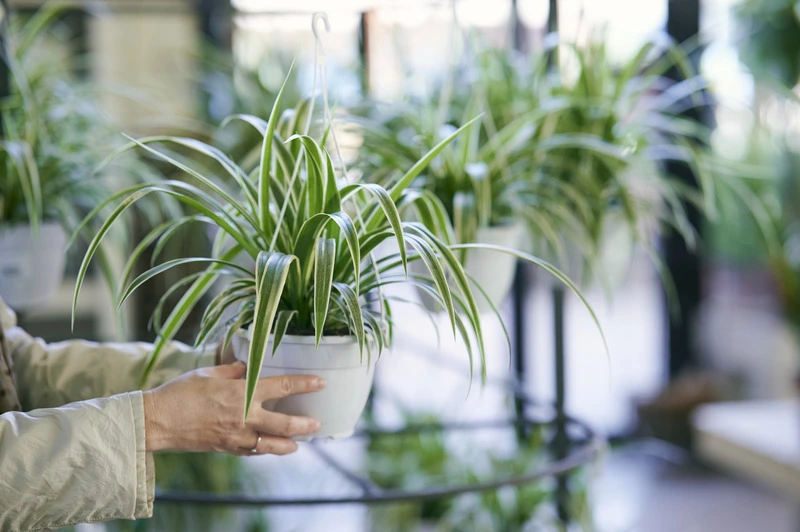
Best Plants for The Office: Aesthetic and Functional Benefits
Choose the right plants for your office space and make it modern, elegant and pleasant for your employees.
Introduction
Incorporating plants into office spaces has become a popular trend for good reason. Not only do they improve the visual appeal of a workspace, but they also provide a host of functional benefits that contribute to a healthier, more productive environment. From improving air quality to reducing stress and increasing productivity, office plants are a valuable addition to any work setting. In this blog post we will talk about the best plants for office spaces, considering both their aesthetic and functional benefits, and offer practical tips for integrating and maintaining them in your office.
Aesthetic Benefits of Office Plants
Decor
Plants can significantly improve the decor of an office space by adding vibrant colours, varied textures, and natural elements. They can be used to complement the existing design, create focal points, or add a touch of nature to sterile, modern environments. Plants like the Fiddle Leaf Fig with its large, glossy leaves, or the striking Bird of Paradise, can serve as statement pieces, while smaller plants like succulents can add subtle touches of green to desks and shelves.
Welcoming Atmosphere
The presence of plants can make an office feel more welcoming and comfortable. Strategically placed plants in reception areas, lobbies, and common spaces can create a friendly and inviting atmosphere for clients, visitors, and employees. For instance, a large Peace Lily in the entrance can greet visitors with its elegant white flowers, while a cluster of Spider Plants in the lounge area can make the space feel more relaxed and homely.
Trendy Plant Options
Plants can also contribute to a trendy and modern office aesthetic. Current popular choices include the Monstera Deliciosa with its unique, perforated leaves, and the sleek, sculptural Snake Plant. These plants not only look stylish but also blend well with contemporary office furniture and design elements. Pairing these plants with chic planters in materials like ceramic, metal, or concrete can elevate the overall look of the workspace.
Functional Benefits of Office Plants
Air Quality Improvement
Plants play a crucial role in improving air quality by increasing oxygen levels through the process of photosynthesis. In an office environment, this can lead to fresher, more breathable air, which can improve overall comfort and concentration. Plants such as the Areca Palm and the Rubber Plant are particularly effective at producing oxygen, making them ideal choices for offices looking to boost air quality.
In addition to producing oxygen, certain plants are known for their ability to filter and purify indoor air by removing harmful toxins. Common office pollutants such as formaldehyde, benzene, and trichloroethylene can be significantly reduced by plants like the Spider Plant, Peace Lily, and Boston Fern. These plants absorb toxins through their leaves and roots, effectively cleaning the air and creating a healthier work environment.
Boosting Employee Well-Being
Numerous studies have shown that the presence of plants can help reduce stress and anxiety in the workplace. The calming effect of greenery can lower blood pressure and create a more relaxed atmosphere. Plants such as Lavender and Jasmine, known for their soothing scents, can further improve this calming effect. Even visually appealing plants like the ZZ Plant or the Snake Plant can contribute to a more serene and stress-free environment.
Plants can also contribute to increased productivity and focus among employees. Research indicates that workplaces with plants can see higher levels of creativity, improved mood, and greater job satisfaction. Easy-to-maintain plants like Pothos and Philodendron are excellent choices for boosting productivity, as they require minimal care while still providing significant benefits. Their lush, green foliage can create an energising and inspiring workspace.
Noise Reduction
Plants can help absorb and reduce background noise in office environments, contributing to a quieter and more focused workspace. Larger plants with broad leaves, such as the Rubber Plant and the Fiddle Leaf Fig, are particularly effective at dampening sound. Placing these plants in strategic locations, such as near workstations or in common areas, can help mitigate noise levels and improve overall acoustics in the office.
Recommended Office Plants
Low-Maintenance Plants
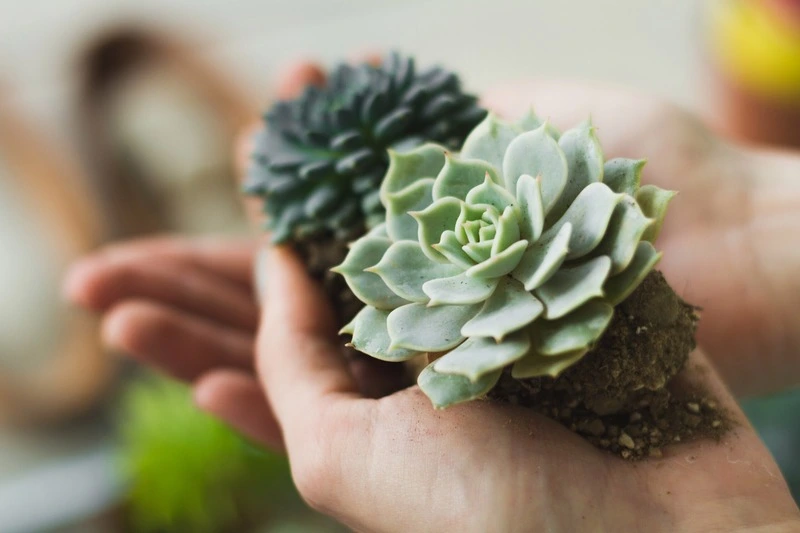
Succulents
Succulents and cacti are perfect for office environments due to their low water requirements and ability to thrive in dry conditions. Examples include the Aloe Vera plant, which not only looks attractive but also has soothing properties for skin, and the Echeveria, known for its rosette shape and vibrant colours. These plants require minimal attention, making them ideal for busy office settings where regular care might be overlooked.
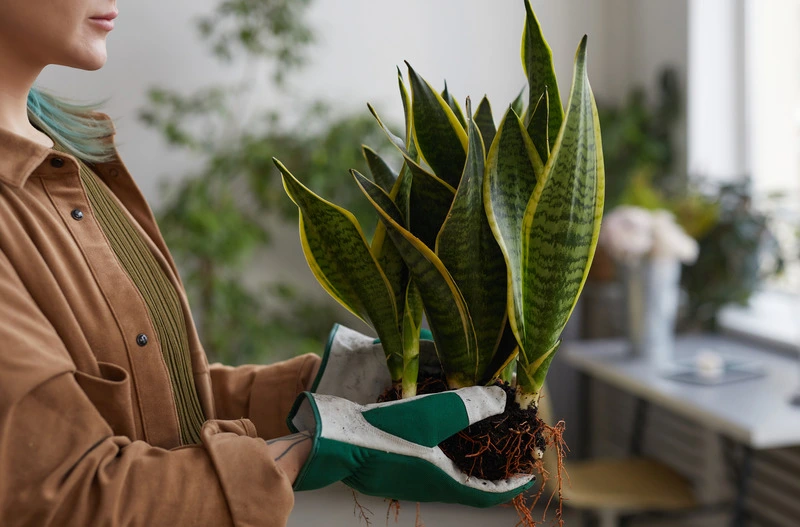
Snake Plant
The Snake Plant, also known as Sansevieria or Mother-in-Law's Tongue, is renowned for its resilience and ability to tolerate low light conditions. It has tall, upright leaves with variegated patterns, adding a modern touch to any office space. The Snake Plant is also an excellent air purifier, capable of removing toxins like formaldehyde and benzene from the air. Its minimal care requirements make it a popular choice for office environments.
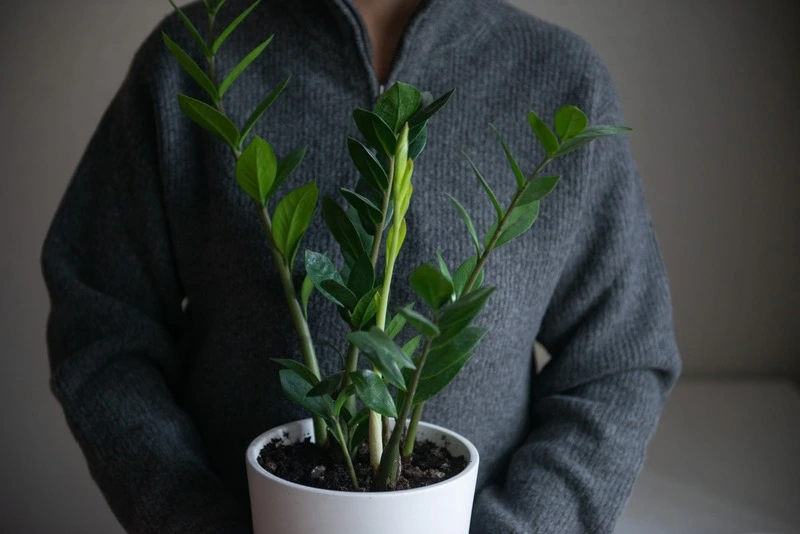
ZZ Plant
The ZZ Plant (Zamioculcas zamiifolia) is another low-maintenance option that thrives in low light and requires infrequent watering. Its glossy, dark green leaves are not only attractive but also highly durable, making it an excellent choice for office spaces. The ZZ Plant is known for its ability to tolerate neglect and still look lush and healthy, making it perfect for busy offices with variable light conditions.
Air-Purifying Plants

Spider Plant
The Spider Plant (Chlorophytum comosum) is a popular choice for improving indoor air quality. It is particularly effective at removing carbon monoxide and other toxins. Spider Plants are easy to care for and can thrive in a variety of light conditions. They also produce "spiderettes," or baby plants, which can be propagated to create new plants. Their cascading leaves make them ideal for hanging baskets or elevated planters.
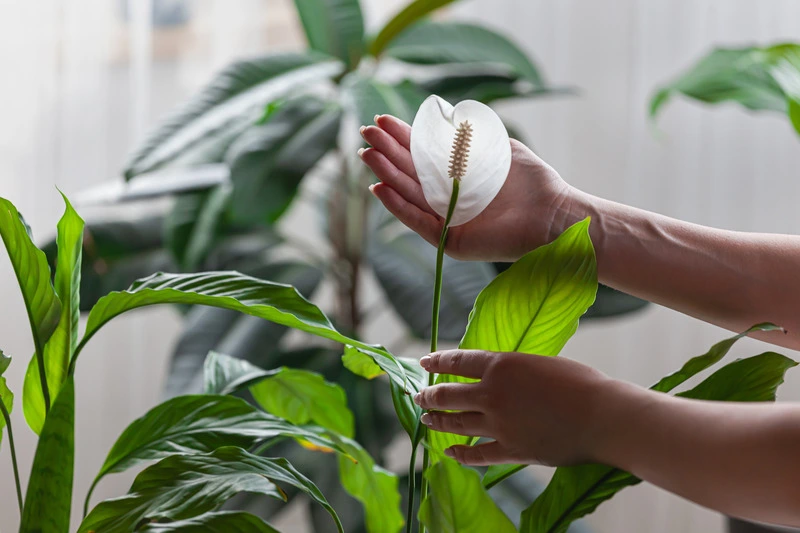
Peace Lily
The Peace Lily (Spathiphyllum) is not only an effective air purifier but also an attractive addition to any office. It is capable of removing common airborne toxins and improving humidity levels. The Peace Lily features striking white flowers that contrast beautifully with its dark green foliage. It thrives in low to moderate light and requires regular watering, making it a suitable choice for offices with varied lighting conditions.
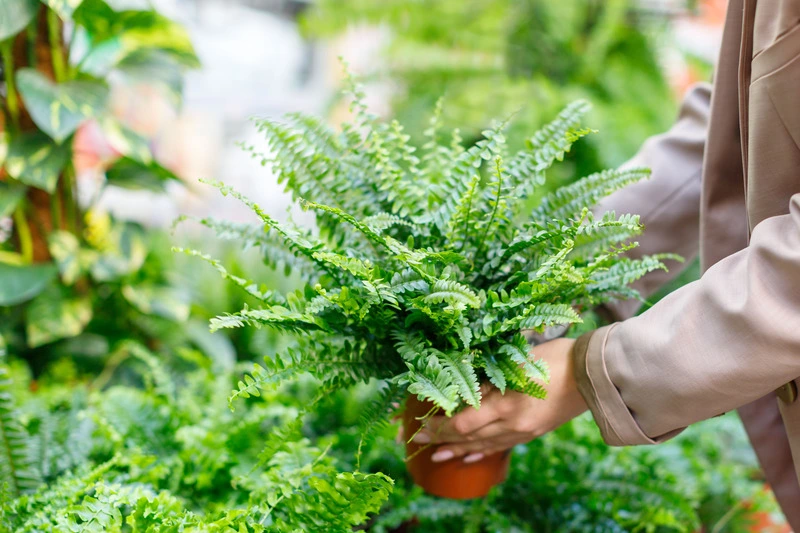
Boston Fern
The Boston Fern (Nephrolepis exaltata) is renowned for its ability to filter indoor air and increase humidity. Its feathery fronds add a touch of elegance and can soften the look of any office space. Boston Ferns prefer indirect light and require regular watering to keep their soil moist. They are particularly effective in areas where humidity control is important, such as near heating or cooling vents.
Decorative Plants
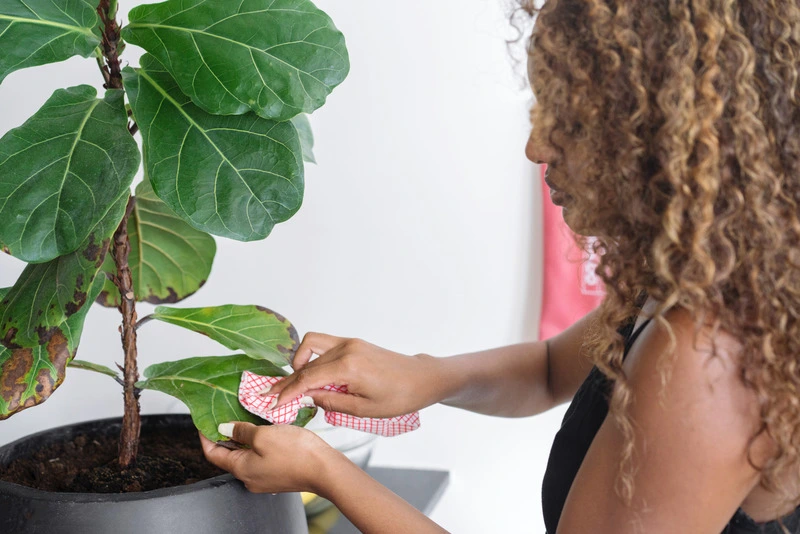
Fiddle Leaf Fig
The Fiddle Leaf Fig (Ficus lyrata) is a popular statement plant for larger office spaces. Its large, violin-shaped leaves create a bold visual impact, making it a focal point in any room. The Fiddle Leaf Fig prefers bright, indirect light and requires regular watering and misting to thrive. Its dramatic appearance and size make it a perfect choice for reception areas or large open-plan offices.
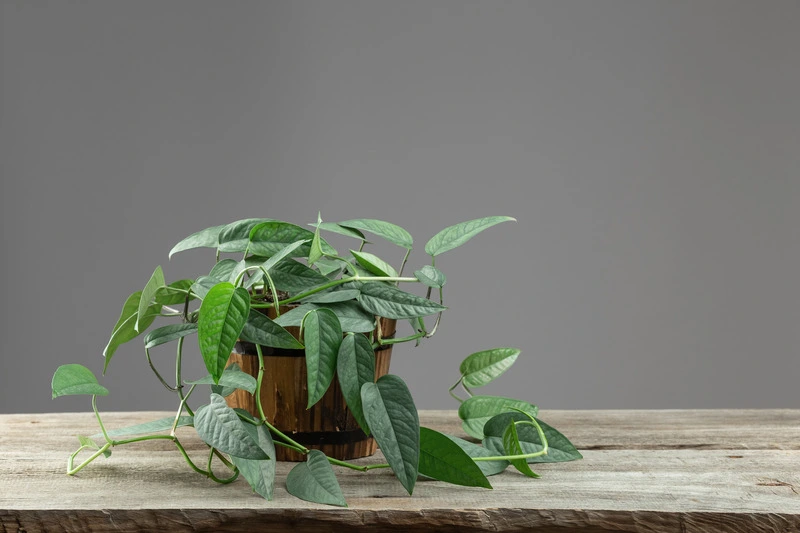
Pothos
Pothos (Epipremnum aureum) is a versatile and easy-to-maintain plant that is well-suited for office environments. It can grow in low light conditions and requires minimal watering. Pothos can be used in a variety of ways, including hanging baskets, trailing from shelves, or trained to climb trellises. Its heart-shaped leaves and variegated colors add a touch of greenery to any workspace, and it is also known for its air-purifying properties.
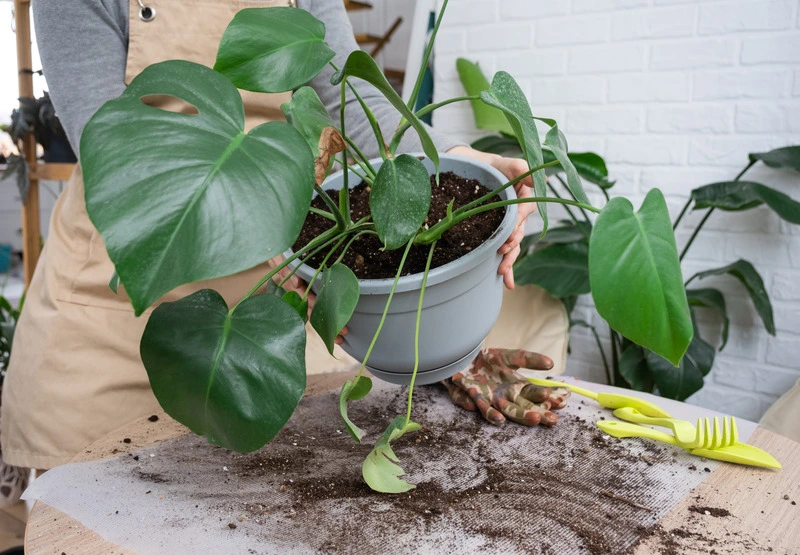
Philodendron
Philodendrons are a diverse group of plants that come in trailing and upright varieties. They are known for their attractive foliage and easy care requirements. Trailing varieties like the Heartleaf Philodendron can be used in hanging baskets or allowed to cascade from shelves, while upright varieties like the Philodendron Selloum make striking floor plants. Philodendrons thrive in low to moderate light and require regular watering.
Tips for Integrating Plants into Your Office Space
Choosing the Right Plants for Your Space
When selecting plants for your office, consider factors such as light levels, space availability, and your capacity for maintenance. Assess the lighting conditions in different areas of the office to choose plants that will thrive there. For example, low-light areas might be suitable for Snake Plants or ZZ Plants, while bright spots could accommodate Fiddle Leaf Figs or Boston Ferns. Ensure that the size of the plants matches the available space and that there is adequate room for growth.
Plant Care Basics
Proper plant care is essential to ensure that your office plants thrive. Develop a watering schedule based on the specific needs of each plant, taking care not to overwater or underwater them. Use appropriate fertilisers to provide necessary nutrients and prune plants regularly to maintain their shape and health. Be vigilant for signs of pests or diseases and take prompt action if any issues arise. Consider assigning plant care duties to a designated employee or hiring a plant maintenance service if needed.
Creative Plant Displays
Incorporating plants into your office design can be done creatively to maximise their aesthetic impact. Use a variety of planters, shelves, and vertical gardens to display plants in different ways. Hanging planters can add greenery without taking up floor space, while tiered plant stands can create attractive plant displays. Rotating plants periodically can keep the office environment fresh and interesting, and seasonal plants can be introduced to add variety throughout the year.
Conclusion
Plants offer a multitude of benefits for office spaces, both aesthetically and functionally. They improve decor, create welcoming atmospheres, and contribute to a trendy and modern look. Functionally, they improve air quality, boost employee well-being, and even help with noise reduction. By choosing the right plants for your office and incorporating them creatively into the workspace, you can create a healthier, more productive, and visually appealing environment for everyone.Whether you opt for low-maintenance succulents, air-purifying Spider Plants, or decorative Fiddle Leaf Figs, the addition of plants to your office can make a significant positive impact. Take the time to select plants that suit your space and care capabilities, and enjoy the many benefits that these green companions bring to your workplace.





